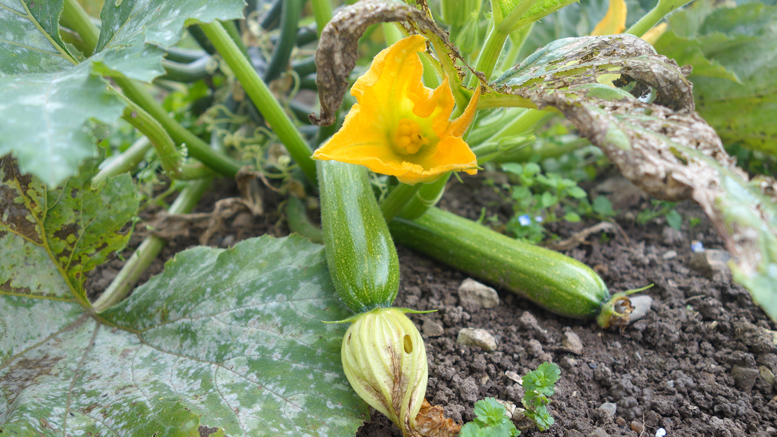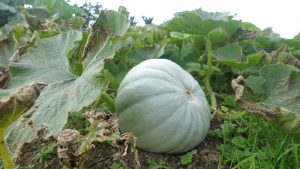Digging with hens

I grew up on a fairly regular half-acre site in Wexford on our grandfather’s farm. We were lucky in so many ways to grow up in the countryside, one being that Dad was a great gardener – he grew all sorts of veg that we harvested and froze or ate through out the seasons. And Mam was amazing (and still is) at coming up with ways of preserving fruits and veg in chutneys, jams, jellies, tarts, etc. I am still very proud of how self-sufficient we were: many days having entire meal ingredients coming from the garden with some cheese from our Gran, and bread from the shop in the village. I loved the sense of freedom and strength that came from knowing that we could feed ourselves. I have always been so proud of how our parents raised us – we learned how to plant and grow, to built and make. And I know that this is why I have such a passion for getting back to this way of life. It is the only way of life that makes sense to me. So in order to create betters ways of living we can start with the food that we put in our mouths: planting what we can where we can. I once had no space to grow vegetables but my housemate and I put compost into the drawers of an old chest of drawers in our concreted over back garden and grew delicious salads and greens

So following my wish to learn and relearn about gardening I have just spent a few weeks in Cloughjordan Eco-village – the first and currently only Eco-village in Ireland. I ended up in Cloughjordan on this particular work exchange after participated in the Permaculture Design Course held there in August. During the course, amongst many wonderful things, we learned about the research that is being carried out in the RED (Research Education Development) gardens by Bruce Darrell. It is a project exploring food production methods. I was really taken during the course by some of the simple and useful questions that Bruce was asking: the main one being: How do we provide enough food to feed a community? I was curious to know the answer. And took him up on an exchange offer to work and live in the eco-village for a while.
To be honest at first I thought there was a very simple answer to this question: you plant the seeds and, voila your vegetables and fruit grows. But as I got into talking with Bruce I learned that it is a really incredibly important question that is innately complex: being dependent on answers to many other simple questions: how many people are you providing food for? Do you plan to provide food all year round? How much land do you need? What is the best method for growing? Who is going to grow the food?

Bruce is working on a series of allotments 10x10metres planting the same or similar crops in each plot but varying the growing methods:
- The intensive plot – double dug with lots of fertility and the aim to maximise yield on the plot – it’s a lot of work and requires lots of compost.
- The extensive plot – its close to the kind of growing my Dad and many gardeners would be familiar with – moderate digging and compost.
- The polycrop plot – this is where a variety of crops are planted together like: pumpkin, runner beans and or beetroot, parsnips and chard,
- The no-dig – this is the plot more in line with Permaculture principles – very little or no digging, lots of mulching…
- And the polytunnel – this is a covered environment, which would hopefully provide a longer growing season, requires more watering and a place to garden on rainy days.
That is my skimpy introduction but Bruce describes this in more detail on his YouTube channel, do check it out as he’s doing amazing work. The question he is asked most and the one foremost on my mind initially was; So, which plot is the best? And the answer: the best what? The best yield? The easiest to manage? The most fun to manage? What I learned from my time working on each plot was that different veg seemed to like different plots and that there were plots that I felt naturally drawn to and would give more attention to – it was impossible for me to remain impartial and give them all equal attention. Bruce has two years of experience and data from his research and 3 more years to go in his 5-year plan so perhaps how will have definitive results at the end of this body of research.
So there is much to learn and I had just a few weeks to get a sense of what this project was a bout. And one important thing I learned to begin with was about how to, and how not to dig. I have been trained by a master: I have been demonstrated the art of no bend digging, digging with hens and the art of using different digging tools. This is funny now looking back at it but if you have not gardened you might have no idea of how physical and demanding it is, especially digging! In the first few days my heart would drop when Bruce suggested that that a particular plot needed to be dug… but he is a great teacher and was kind enough to make helpful and useful observations about how I might change what I was doing in order to reduce strain on my back by bending my knees or not bend my back and very simply stating that I really didn’t have to prove anything by hauling large sods out of the soil. On a number of days that I dug on my own I began to really drop into a rhythm that was enjoyable, productive and most importantly fun! I learned to listen to my body and adjust what I was doing if I began to feel pain and I learned to be satisfied with dealing with small pieces of earth at a time. It became a much more mindful practice with the added joy of feeling my body grow stronger and really enjoy the physicality of this new exercise.
The most fun though was digging with the hens! There is a group of 14 hens in a nearby coup and run so we took a number of shifts gently turning the soil and sorting out Scutch grass roots and stones. The hens loved this and whenever one of us walked past with a digging implement they would flock forward in anticipation of what was coming next. The ladies (as I like to call them) could hardly contain themselves as the soil was turned and they would literally flock together right where you were putting the fork into the ground. And then when the soil was turned… god help the worms but they were gobbled up faster that I could even see them. The excitement of discovering the worms kept them picking and scratching at the soil making them entertaining, fascinating and effective digging companions. It also raised some issues for me as a vegetarian around gardening and the fact that it is difficult or I would say impossible not to kill something as you garden. I winced and apologised to the worms as they were gobbled up but I also knew that the hens needed the protein and I knew that my body was craving the protein of the wonderful rich eggs that these hens were producing. I choose to eat eggs and so I choose to see and accept what the hens are thriving on. What I ended up with from these simple activities was a greater awareness and a greater sense of connection and gratitude for the richness of the earth below us, we are dependent on it for everything we eat and I love that I am stepping into this relationship in a more mindful way: digging, planting and eating with gratitude.
There is so much I could write about the experience of working in the gardens at Cloughjordan and I plan to in future posts. I’ve added some links below for further information about Cloughjordan, and the RED Gardens.
– – – – – – – – – – – – – – – – – – – – – – – – – – – – – – – – – – – – – – – – – – – –
Cloughjordan Eco-village http://www.thevillage.ie/
You can find out about Permaculture Courses that Cultivate run here: http://www.cultivate.ie/
RED Gardens
You tube channel: https://www.youtube.com/channel/UCq9U-gJ1LtDCE4W5BhEDFSQ
Introduction to the RED gardens https://www.youtube.com/watch?v=AvpJPEp5Uks
No rules compost https://www.youtube.com/watch?v=fSIIEn1abc8
RED Gardens Facebook Page https://www.facebook.com/RedGardens/?fref=nf&pnref=story


Recent Comments